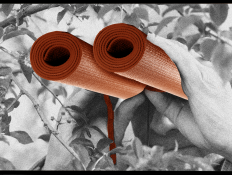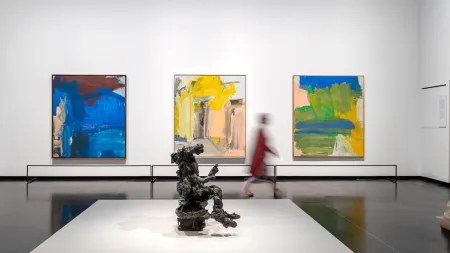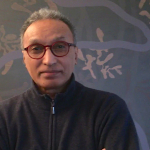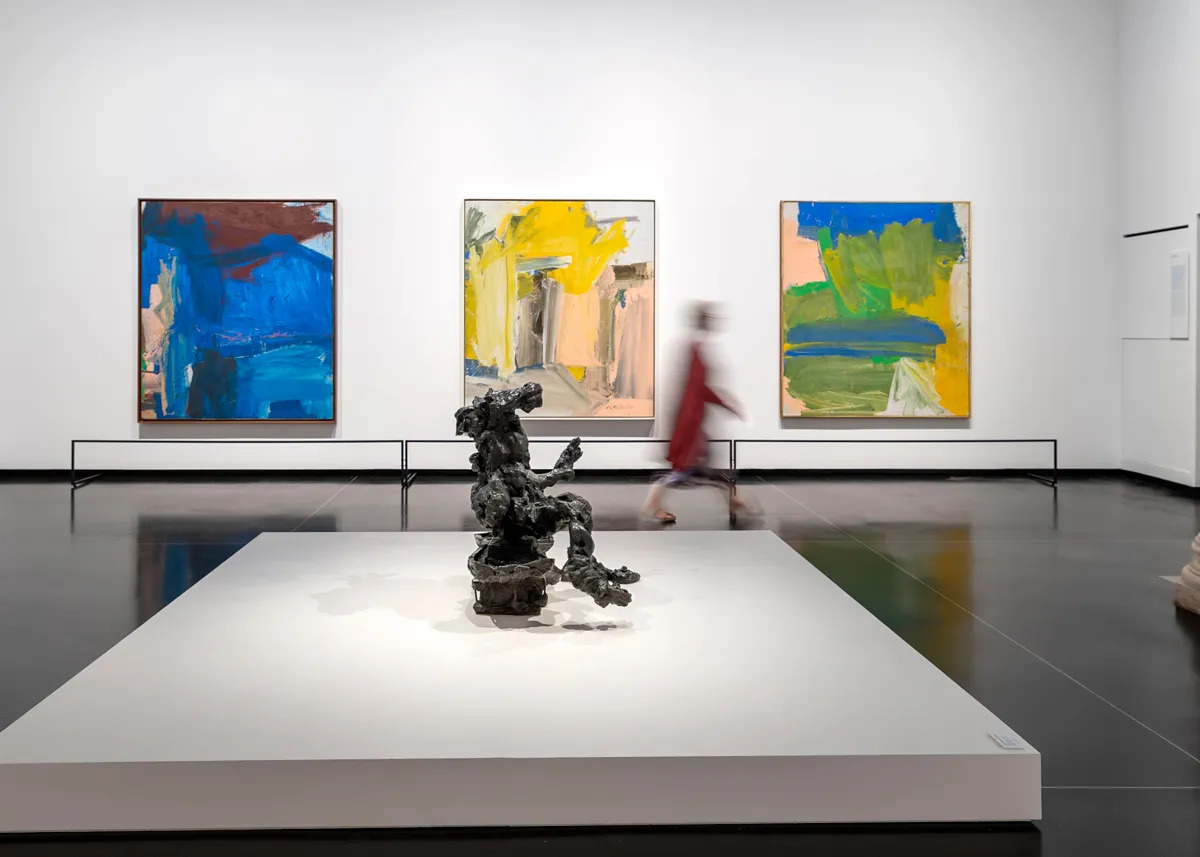
Though best known as one of the leading proponents of Abstract Expressionism, Willem de Kooning, whose geometric and biomorphic shapes of the 1930s and ’40s gave way to his iconic “Woman” series of the ’50s, had a dalliance with sculpture. Those 3D experiments are the focus of the artist’s must-see exhibition Gallerie dell’Accademia in Venice (through September 15).
“My first interaction with de Kooning sculptures was some 30 years ago,” the exhibition’s cocurator Gary Garrels told ARTnews. He has encountered them during the inauguration of the Also Rossi–designed Bonnefanten Museum in Maastricht, the Netherlands, but had rarely encountered such examples since. He thought of doing an exhibition of them, but had trouble securing a venue for the show until a colleague, curator Mario Codognato, let him know that the Gallerie dell’Accademia was interested in mounting a de Kooning show.
Titled “Willem de Kooning and Italy,” the exhibition is the first to explore the time that the artist spent in the country between 1959 and 1969 and how his time there impacted his practice. With some 75 works, it is also the largest presentation of de Kooning in Italy in nearly 20 years. “Sculpture was just a five-year period, but I feel it has been pivotal for him,” Garrels said. “I am fascinated by the emotional complexity of his bronzes, by the unorthodox way they have been made, by their painterly though physical aspect.”
In May 1959, de Kooning sold-out an exhibition of new abstract paintings at the Sidney Janis Gallery in New York, giving him the means to return to Europe for the first time since he had left Holland in 1926. After a few days in Venice, he headed to Rome, where he met poet Gregory Corso, who guided him through the city. Four weeks after returning to New York, de Kooning rushed back to Italy. “I felt I had to return to Rome right away, because the city made an enormous impression on me,” he later told an Italian journalist.
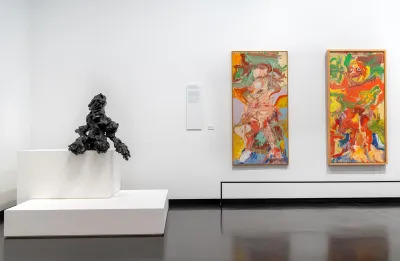
The Accademia show opens with three of the abstractions from the successful Janis show, while on the opposite wall hang three paintings made in the months following his four-week return to New York. “The palette shifted, the brushstrokes are looser, lusher, and sensual,” Garrels said of those pieces. Villa Borghese, for example, features wide swaths of blue, yellow, green, pink, and white layered on top of each other. (The gallery also features examples of the 50 collaged drawings de Kooning made in Rome, in a studio space lent to him by Italian painter Afro Basaldella.)
Almost exactly 10 years after his first trip to Italy, de Kooning attended the Festival dei Due Mondi (Festival of Two Worlds) in Spoleto on the invitation of Priscilla Morgan, an impresario and patron of all forms of art. While drawings of musicians likely inspired by the event are on view here, this third trip proved to be the most consequential in the artist’s turn to sculpture.
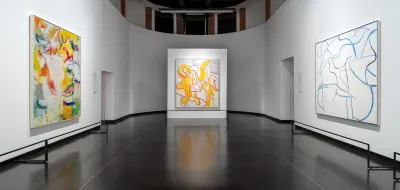
During one of several trips to Rome, he chanced upon sculptor Herzl Emanuel, whose foundry he ended up frequenting. He started out by making small clay figures, and ultimately chose 13 of them to cast in bronze. “This body of small sculptures is the heart and soul, of the show, but I wanted one of his later great sculptures to welcome the public,” Garrels said. That sculpture is aptly titled Hostess. “She is jaunty, irreverent, captures de Kooning’s expressiveness, and sense of humor,” the curator added.
In April 1970 during a visit to New York on the occasion of a solo show at the iconic gallery Knoedler & Co., sculptor Henry Moore suggested to de Kooning that he should enlarge those clay maquettes into full-size works. Originally measuring 6.5 inches tall, Untitled #12, of a truncated, seated female figure, was the first example to meet this fate. Satisfied with the result, de Kooning started modeling at a larger scale. Eleven works came out of this experience, all on which are shown together in Venice for the first time since a 2011 de Kooning survey at the Museum of Modern Art in New York. A side room with sculptures by Ausguste Rodin, Alberto Giacometti, and Medardo Rosso gives further context to how de Kooning, as Garrels put it, “extends the history of modern bronze sculpture.”
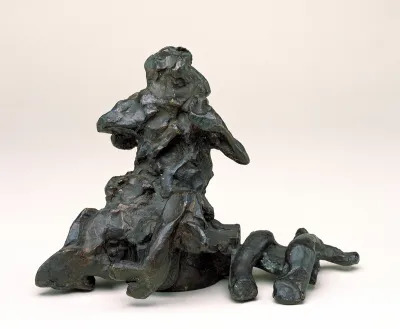
In organizing the exhibition, Garrels and Codognato wanted to showcase the correspondence between de Kooning’s paintings, sculptures, and drawings. His paintings from the ’70s have a more “liquid” look to them—“in these paintings, gender is not as declarative”, Garrels noted—than his earlier canvases. The wetness of clay echoes into the fluidity of his brushstrokes. Also reunited for the first time are two of these loose figurations, Red Man with Moustache and Man Accabonac (both 1971), which were once shown as a diptych, in a 1972 exhibition at the Baltimore Museum of Art.
By 1974, de Kooning felt he had exhausted sculpture. That was de rigueur for the artist, who almost like clockwork would alternate between abstraction and figuration in five year cycles. The show’s final room showcase paintings he completed in the ’80s that themselves are continuations of works abandoned in the late ’70s. “These final paintings are difficult to reproduce,” Garrels said. “They appear like areas of flat white, though in reality you can see pentimenti, blushes of colors, traces of shadows, showing through the surface.”
Across Five Decades, Gavin Jantjes’s Art Has Tackled Everything from Abstraction to Apartheid
Archie Moore’s Award-Winning Venice Biennale Installation Acquired by Tate, Queensland Art Gallery

Jeff Bezos May Be the Owner of a New $80 Million Gulfstream Jet
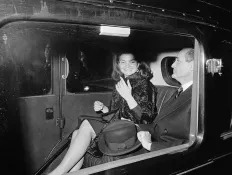
The Most Expensive Celebrity Engagement Rings: Jackie O’s 40-Carat Harry Winston Sparkler, Grace Kelly’s Emerald-cut Cartier Bauble and More
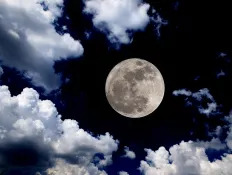
China produced large quantities of water using the Moon’s soil

Most Valuable NFL Teams 2024: Cowboys First to Top $10 Billion
